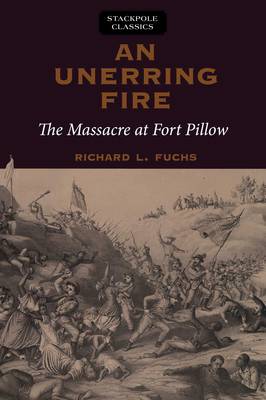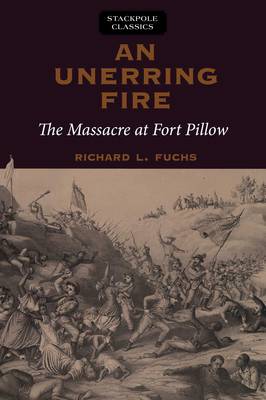
Je cadeautjes zeker op tijd in huis hebben voor de feestdagen? Kom langs in onze winkels en vind het perfecte geschenk!
- Afhalen na 1 uur in een winkel met voorraad
- Gratis thuislevering in België vanaf € 30
- Ruim aanbod met 7 miljoen producten
Je cadeautjes zeker op tijd in huis hebben voor de feestdagen? Kom langs in onze winkels en vind het perfecte geschenk!
- Afhalen na 1 uur in een winkel met voorraad
- Gratis thuislevering in België vanaf € 30
- Ruim aanbod met 7 miljoen producten
Zoeken
€ 19,45
+ 38 punten
Omschrijving
What really happened at Fort Pillow on April 12, 1864?
The Union called it a massacre.
The Confederacy called it necessity.
TheTennessee spring came early that year, "awakening regional plants as warmer air and mois soil nurtured new life. Across the landscape could be seen the faint hint of green as sweet gum, hickory, oak cottonwood, ...Sweet Williams, and wild dogwood added their hues." This serene backdrop in hardly the place where one would imagine such a one-sided military atrocity to take place.
Although at first glance the numbers are hardly noteworthy, the casualty ratio speaks volumes on the event. Eyewitness accounts relate "vivid recollection" of the numerous and specific nature of the injuries suffered by the survivors."
Controversy and scandal surround the Southern general Nathan Bedford Forrest. Why did it seem that he passively watched his men attack and mutilate more than one hundred apparently unarmed soldiers?
Perhaps the biggest controversy involved racial prejudice. Was there a reason that Fort Pillow was singled out for Confederate vengeance, with the knowledge that the majority of the men were African-American? Of the dead, 66 percent were black.
An Unerring Fire answers these questions and more in a critical examination of what remains one of the most controversial episodes of the Civil War.
The Union called it a massacre.
The Confederacy called it necessity.
TheTennessee spring came early that year, "awakening regional plants as warmer air and mois soil nurtured new life. Across the landscape could be seen the faint hint of green as sweet gum, hickory, oak cottonwood, ...Sweet Williams, and wild dogwood added their hues." This serene backdrop in hardly the place where one would imagine such a one-sided military atrocity to take place.
Although at first glance the numbers are hardly noteworthy, the casualty ratio speaks volumes on the event. Eyewitness accounts relate "vivid recollection" of the numerous and specific nature of the injuries suffered by the survivors."
Controversy and scandal surround the Southern general Nathan Bedford Forrest. Why did it seem that he passively watched his men attack and mutilate more than one hundred apparently unarmed soldiers?
Perhaps the biggest controversy involved racial prejudice. Was there a reason that Fort Pillow was singled out for Confederate vengeance, with the knowledge that the majority of the men were African-American? Of the dead, 66 percent were black.
An Unerring Fire answers these questions and more in a critical examination of what remains one of the most controversial episodes of the Civil War.
Specificaties
Betrokkenen
- Auteur(s):
- Uitgeverij:
Inhoud
- Aantal bladzijden:
- 190
- Taal:
- Engels
- Reeks:
Eigenschappen
- Productcode (EAN):
- 9780811736695
- Verschijningsdatum:
- 15/09/2017
- Uitvoering:
- Paperback
- Formaat:
- Trade paperback (VS)
- Afmetingen:
- 150 mm x 229 mm
- Gewicht:
- 294 g

Alleen bij Standaard Boekhandel
+ 38 punten op je klantenkaart van Standaard Boekhandel
Beoordelingen
We publiceren alleen reviews die voldoen aan de voorwaarden voor reviews. Bekijk onze voorwaarden voor reviews.









